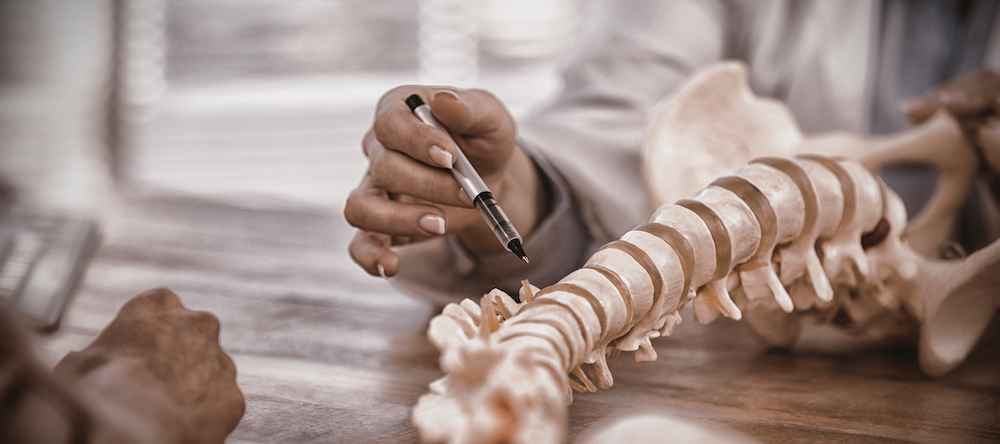When you sustain a spinal cord injury in a car accident, it’s essential to take action. Speak to a Houston car accident attorney immediately. With an advocate on your side, you have the chance to fight for a better future.
Automobile wrecks and other traumatic events exact all manner of injuries. Bruises, fractures, cuts, concussions, and scratches result in pain and disabilities.
Spinal cord injuries (SCIs) rank among the most serious of personal injuries. Victims find their physical abilities completely or nearly eviscerated. Mental health suffers significantly. Below, we describe the nature of these injuries, why they can devastate you and your family, and your recourse against the careless actors that cause them.
What is a Spinal cord Injury?
Table of Contents
The Spinal Cord
Your spinal cord channels signals from the brain to nerves connected to the cord at various regions. Specifically, these nerves branch from a number of vertebrae along the spinal cord throughout four regions:
- Cervical: The cervical region consists of seven vertebrae in the neck region. Along with sending brain messages to your chest and upper arms, the cervical spine supports your head and neck.
- Thoracic: In the thoracic region, you have 12 vertebrae starting immediately below the cervical spine. The nerves in this upper back area transmit signals for lungs, hearts, and abdomen. This area of the spinal cord promotes breathing, heartbeats
- Lumbar: Your lower back, or the lumbar region, contains five disks. Nerves from lumbar discs send signals to your legs, bladder, and bowel, controlling walking, urination, and bowel movements.
- Sacral: Below the lumbar, you will find five vertebrae discs that form the sacral region. These nerves control the legs, thighs, and pelvic regions.
How a Spinal Cord Injury Happens
Spinal cord injuries interrupt the transmission of signals along these regions. Such injuries can involve a direct tear of the spinal cord. More commonly, there’s a fracture or dislocation of the vertebrae.
Moreover, the broken or dislocated vertebrae pieces may lacerate the spinal cord tissues or compress nerves. Strokes, diseases, and degenerative processes contribute to these injuries. As you will read below, sudden traumatic incidents cause a great number of spinal injuries.
The Effects of Spinal Cord Injuries
A spinal cord injury can result in complications such as:
- Inability to control bladder or bowel movements
- Limitations on or loss of movements of hands, arms, legs, and trunks
- Sexual dysfunction
- Changes in or loss of fertility
- Inability to feel hot, cold, textures, or other sensations of touch
- Intense stinging
- Chronic pain
You may have heard the terms “quadriplegic” and “paraplegic.” Those with the former type of injury have a loss of all function to the legs, arms, pelvic organs, trunk, and hands. A paraplegic experiences loss to part of the legs, trunk, and pelvic organs. Those in this category may be able to use their arms and hands.
The Details of a Spinal Cord Injury Matter
Injuries to the spinal cord disrupt the transmission of brain signals below the point of injury. Thus, where the injury occurs determines the magnitude of loss. At the highest levels of the cervical region of the spinal cord, or C-1 and C-2, injuries may prove fatal. These segments of the spinal cord support the head.
Those with spinal injuries in the first three portions of the cervical spine may experience extreme difficulty breathing and require a ventilator. If you have an injury in the thoracic region, you likely retain the ability to use your hands effectively. However, trunk control is significantly impaired.
If you suffer a “complete” spinal cord injury, you completely lose your senses and motor skills below the point of injury. An “incomplete” injury means that you do not suffer paralysis below the injury, but you have limitations on leg or other movements. Even at 18 months beyond the initial injury, patients in the “incomplete” category have some, but not all, restoration of function. In fact, very few victims of a spinal cord injury regain all the bodily movements they had before the injury.
Many of the complications require that victims return to the hospital for treatments. Also, people who suffer SCI have an increased risk of diseases such as diabetes, cancer, arthritis, heart disease, and lung disease.
Impact Extends Beyond Mobility
A spinal injury affects more than mobility. Victims, especially of injuries to the upper spinal cord segments, stand at a major risk of pneumonia. This infection of the lung appears initially as a common cold.
Trauma to the spinal cord, its tissues, or nerves limits your ability to cough and clear lungs of sputnum. This mucus accumulates in the lungs. Pneumonia ranks as the leading cause of death for victims of spinal injuries.
Ulcers occur in roughly 15 percent of victims within one year after the onset of the spinal injury. By some studies, as many as three to four out of every ten spinal injury patients experience pressure ulcers. These result from incontinence, lack of body movement, depression, and poor eating.
Aside from the physical impacts, spinal injuries exact emotional tolls on victims. Nearly 11 percent to 37 percent of those with a spinal cord injury suffer from depression. Studies also suggest that these victims experience anxiety disorders and multiple depressive disorders at higher rates than those without spinal injuries.
The Facts on Spinal Cord Injuries
Motor vehicle crashes represent the leading cause of spinal cord injuries, accounting for just under 39 percent of these injuries. Here are some other statistics:
- 17,810 new cases arise annually in the United States.
- The average SCI victim is 43 years old at the time of the injury.
- Approximately 50 percent of the injured fall between ages 16 and 30 years old, with eight in every ten being males.
- Nearly half of these injuries are complete, meaning the victims are paralyzed
- Falls cause 32.2 percent of spinal injuries and represent the leading cause of these injuries among adults who are 65 years old and older.
- One-quarter of spinal cord injuries involve alcohol consumption.
- The total cost of injuries to the spinal cord reaches $9.7 billion.
- For quadriplegics, medical expenses and living expenses run about $1.15 million in the first year with the injury and over $199,000 per year thereafter.
- Nearly 30 percent of SCI victims require multiple hospital stays, each averaging 19 days.
What Are the Symptoms?
If you have been in a car wreck or other traumatic event, look for these symptoms of an injury to the spinal cord:
- Loss of balance or coordination
- Intense pressure on your neck, back, or head
- Inability to walk, stand, or sit
- Numbness, tingling, or absence of sensation in your hands, fingers, feet, or toes
- Sudden or constant urges to urinate or defecate, often to the point of not being able to control them
- Breathing problems
- Lumps on your spine or head
Damage to the thoracic nerves often results in the sudden onset of high blood pressure. Flushed faces, red blotches appearing on your skin above the injury point, headaches, nausea, decreased heart rates are among the signs of the onset, otherwise known as autonomic dysreflexia. Your skin below the injury point may become cold, clammy, or littered with goosebumps. Other symptoms include nausea or nasal congestion.
What To Do If You Suspect a Spinal Cord Injury?
A suspected spinal cord injury requires immediate and careful attention. You should not be moved except to escape more imminent harm such as a fire. Emergency responders typically will immobilize you. Remaining still might not be your first instinct as you understandably will panic after a motor vehicle wreck.
Neck or back movements could damage spinal cords, tissues, or nerves. As such, avoid removing your helmet unless it becomes necessary to free air passageways. You might ask someone to provide heavy towels for your neck before emergency technicians arrive on the scene.
Speaking of first responders, call 911 immediately if you are able. Doing so brings critical medical attention that might avoid or reduce the damage. Those involved in automobile crashes, falls, or collisions in sporting events might be tempted to dismiss early signs of an SCI. With prompt attention in an emergency room come MRIs, blood tests, and other tools that may detect or aid the diagnosis of a spinal cord injury. A diagnosis may result in immediate surgery.
Contact a Personal Injury Attorney Immediately
DON’T WAIT TO GET HELP.
Immediate medical attention may save your life and lessen the impact of a spinal cord injury. You also need to act promptly to protect your legal rights. The law sets a deadline known as the “statute of limitations” for you to sue for injuries. The clock begins to run from the date of the crash, not when particular symptoms or effects of the injury arise.
Reach out to us as soon as you can after the car accident. We will gather your records as you get treatment. With spinal injuries, you may need motorized wheelchairs and other sophisticated medical devices to assist with even basic body functions.
Hospitalizations, rehabilitation, and medications add to the tremendous past and future medical expenses. We seek compensation for lost income and lost earning capacity — often permanent and total. Your damages can also include pain, suffering, and emotional distress. If you’re married, your spouse may have a loss of consortium claim for lost ability to support and provide companionship.
Gain the Compensation You Deserve
You may have a wrongful death claim if your spouse dies from a spinal cord injury caused by negligence. In such a claim, you may recover:
- Expenses for treatments related to the spinal cord injury that caused the death
- Funeral and burial bills
- The earnings that your deceased loved one would have received or expected
- Loss of pension or health benefits
The damages above represent the economic benefits you would have received from your loved one. A wrongful death claim also includes the survivor’s loss of companionship and consortium of the decedent and mental suffering from the death.
We stand ready to pursue compensation for the serious and extensive losses that a spinal injury may inflict upon you.





